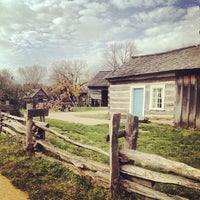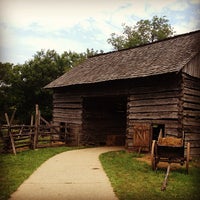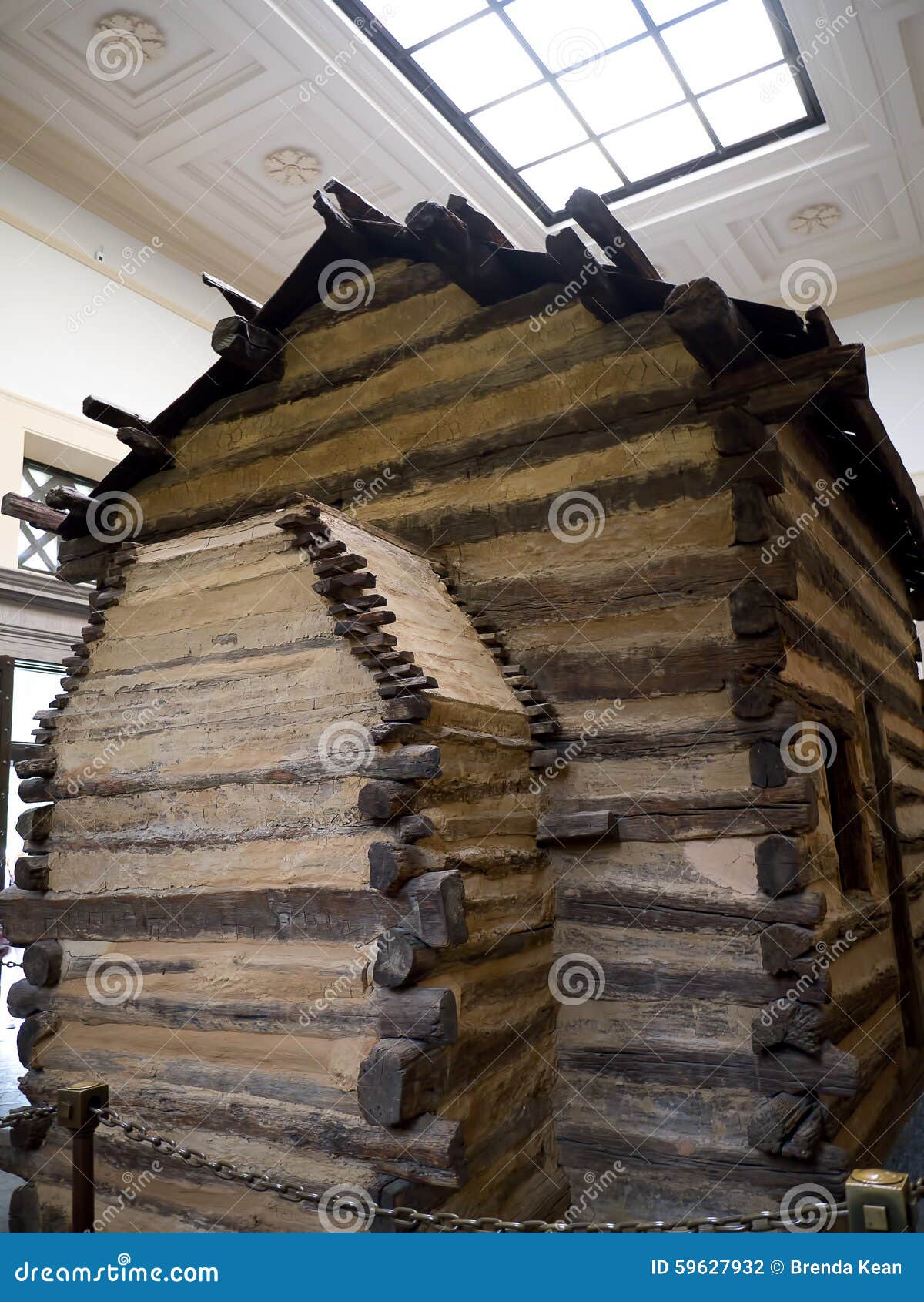

Some scholars also believe John Lloyd Wright as a child possibly played with the Log Cabin Playhouse, a similar wooden construction set that had been developed by toy company Ellis, Britton & Eaton in the 1860s. Lincoln Logs followed the trail blazed by Tinkertoys and Erector Sets, which had been introduced a few years earlier. The toy’s packaging featured a simple drawing of a log cabin, a small portrait of Lincoln and the slogan “Interesting playthings typifying the spirit of America.” Capitalizing on both a nostalgia for the frontier at a time when the United States was becoming increasingly urbanized and a wave of patriotism in the wake of World War I, Lincoln Logs became an instant success. The toy came with instructions to build not only Abraham Lincoln’s Kentucky boyhood home, but a famous log structure from the pages of American literature, Uncle Tom’s Cabin. In 1918, John Lloyd Wright began to market his creation through his own firm, the Red Square Toy Company, and two years later he received a patent for his “toy-cabin construction.” He bestowed upon his creation an alliterative name that also evoked an American icon-Lincoln Logs. Unlike Froebel’s building blocks, the interlocking system of miniature logs could withstand the shockwaves unleashed by children’s playing roughly with the toys. In 1916, using the blueprint for the Imperial Hotel as a model, he created a toy construction set that consisted of notched pieces of wood that children could stack to build log cabins, forts and other rustic buildings. Out-of-work, John Lloyd Wright turned his attention to a pint-sized design project. Later research officially challenged the authenticity of the logs that made up the reconstructed cabin, and in 1956 the Park Service was finally forced to admit that the cabin was of “debatable authenticity.” Eventually the “birthplace” logs were scientifically tested, and they dated to the 1850s, four decades later than Lincoln’s birth.The relationship between father and son, however, crumbled over money long before the earthquake-proof hotel was ever constructed. President Woodrow Wilson was there to accept it. A third ceremony was held in 1916, when Collier’s group, known as the Lincoln Farm Association, turned it over to the federal government, and it finally became Abraham Lincoln National Park. At the end of construction, in 1911, another dedication was held, attended by President William Taft. After the stone memorial building was completed, it was discovered that the cabin was too large for the space, so it was trimmed down from its original 16 x 18 feet, to 12 x 17 feet. Money was raised to commission the large neoclassical memorial, designed by the architect of the Thomas Jefferson Memorial, and a dedication was held at the beginning of construction, in 1909, on Lincoln’s 100th birthday, attended by President Theodore Roosevelt. Collier’s group purchased it from its current owner for $1,000, and the pieces were eventually transported back to the Kentucky birthplace, with much ceremony, draped in a flag, and people saluting as the procession passed from town to town. The birthplace cabin, pieces of which by then were mixed up with Jefferson Davis’ cabin, consisted of around 200 logs, a door, a window, and some floorboards, in storage in a basement in New York, after being displayed for the last time at Coney Island. The birthplace was auctioned off in 1905, and purchased by the publisher of Collier’s Weekly, with the intent of preserving it and opening it to the public, in a proper way. By 1904, though, Dennett was in financial ruin, and committed to an insane asylum. He also purchased the alleged birthplace cabin of Confederate President Jefferson Davis, then took the two cabins on the road, showing them side by side at fairs and expositions, assembling and disassembling them over and over. Dennett acquired a cabin that locals claimed was the original cabin, removed from the site years ago. Federal efforts to acquire the birthplace faltered, and in 1894, it was bought by a New York restaurant chain owner and missionary, Alfred Dennett, with plans to develop it into a tourist attraction. The Lincoln family moved to another farm two years after he was born, and it is likely that the original log cabin was burned up for firewood by subsequent owners, probably in the 1830s.


Inside the structure is his birthplace cabin-which, however, is not really the actual birthplace cabin.

The main feature at the site is a Romanesque memorial, with 56 steps, one for each year of the president’s life, built on the location of his original birthplace cabin. The property is now a National Historical Park with a visitor center about the revered 16th president of the USA. In 1808, Abraham Lincoln’s father bought a property called Sinking Spring Farm, and built a cabin next to the spring, where his son, Abraham was born a year later.


 0 kommentar(er)
0 kommentar(er)
